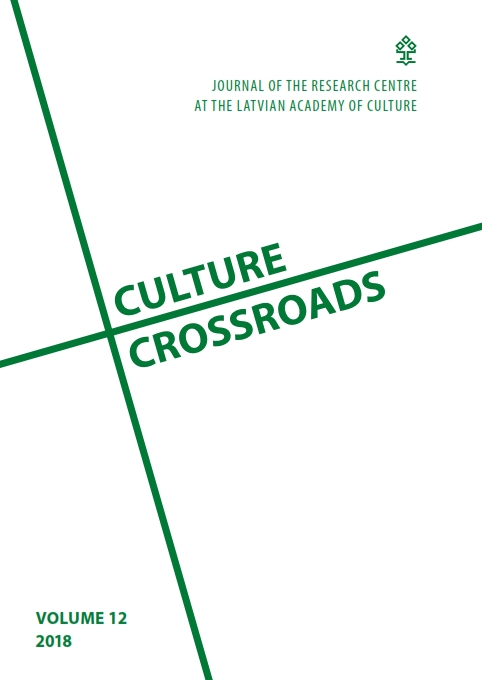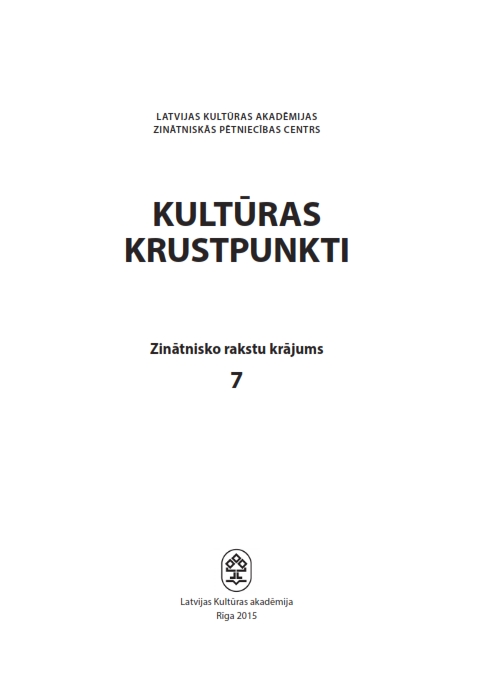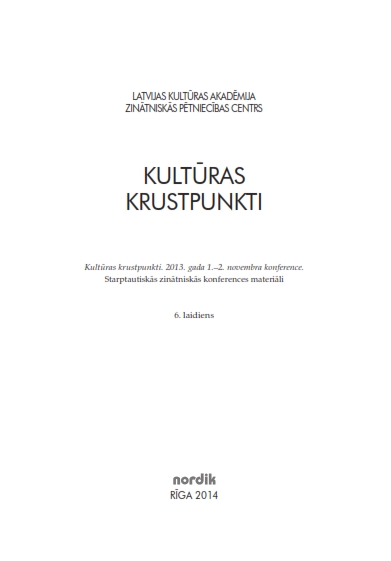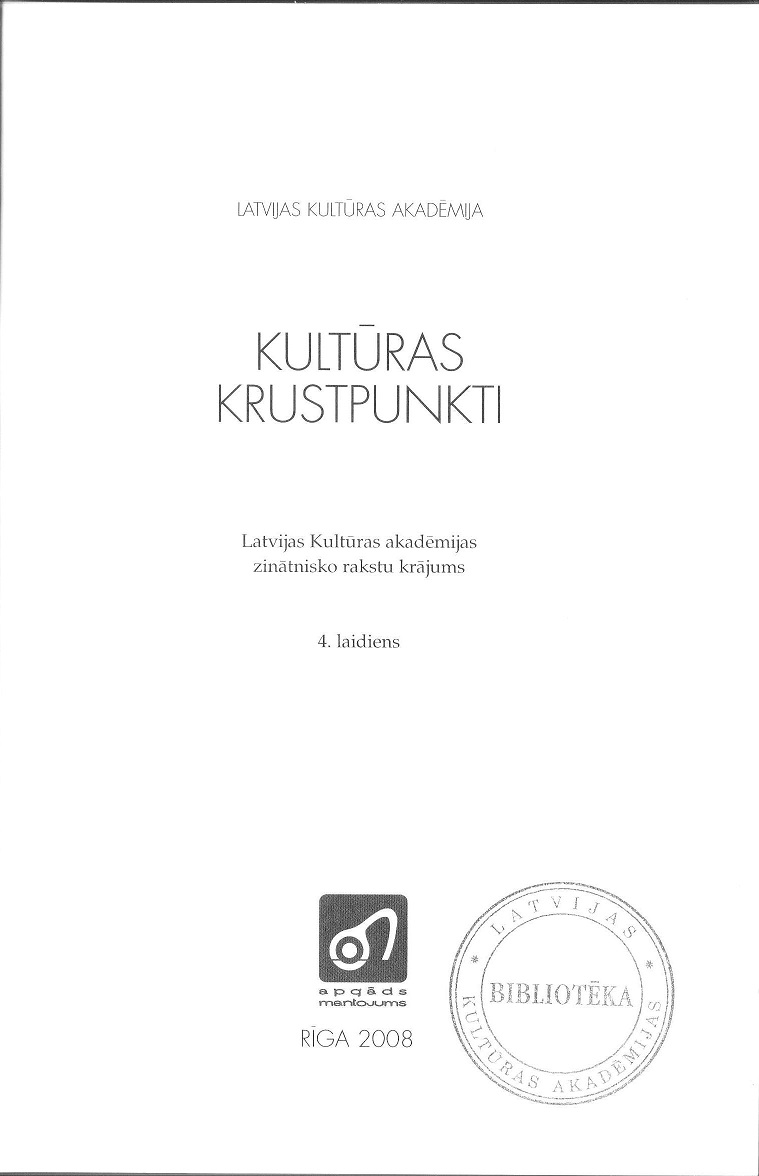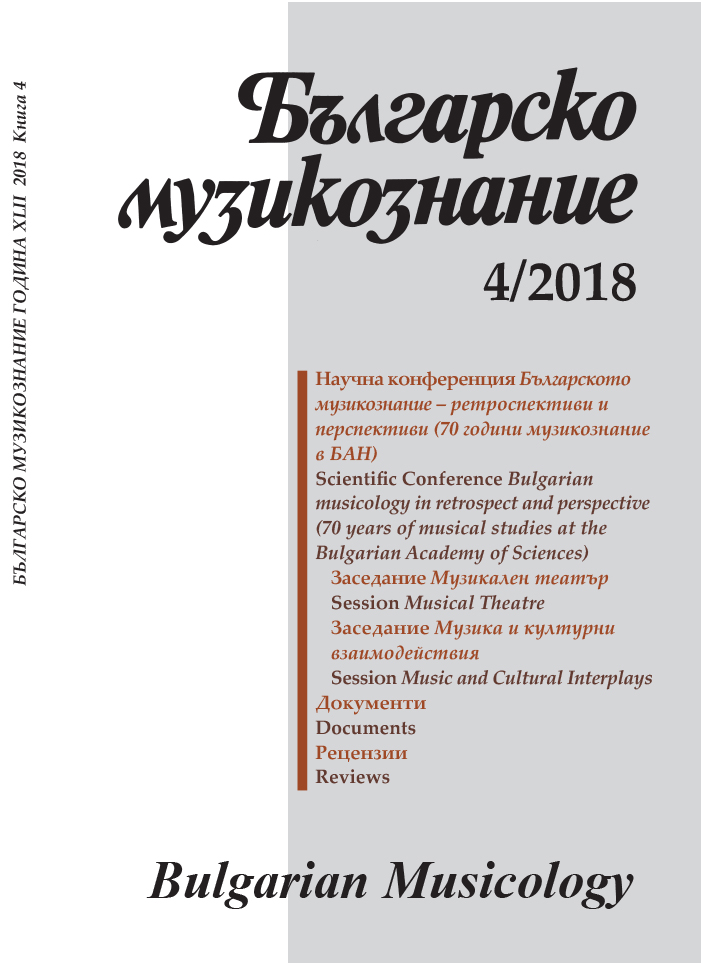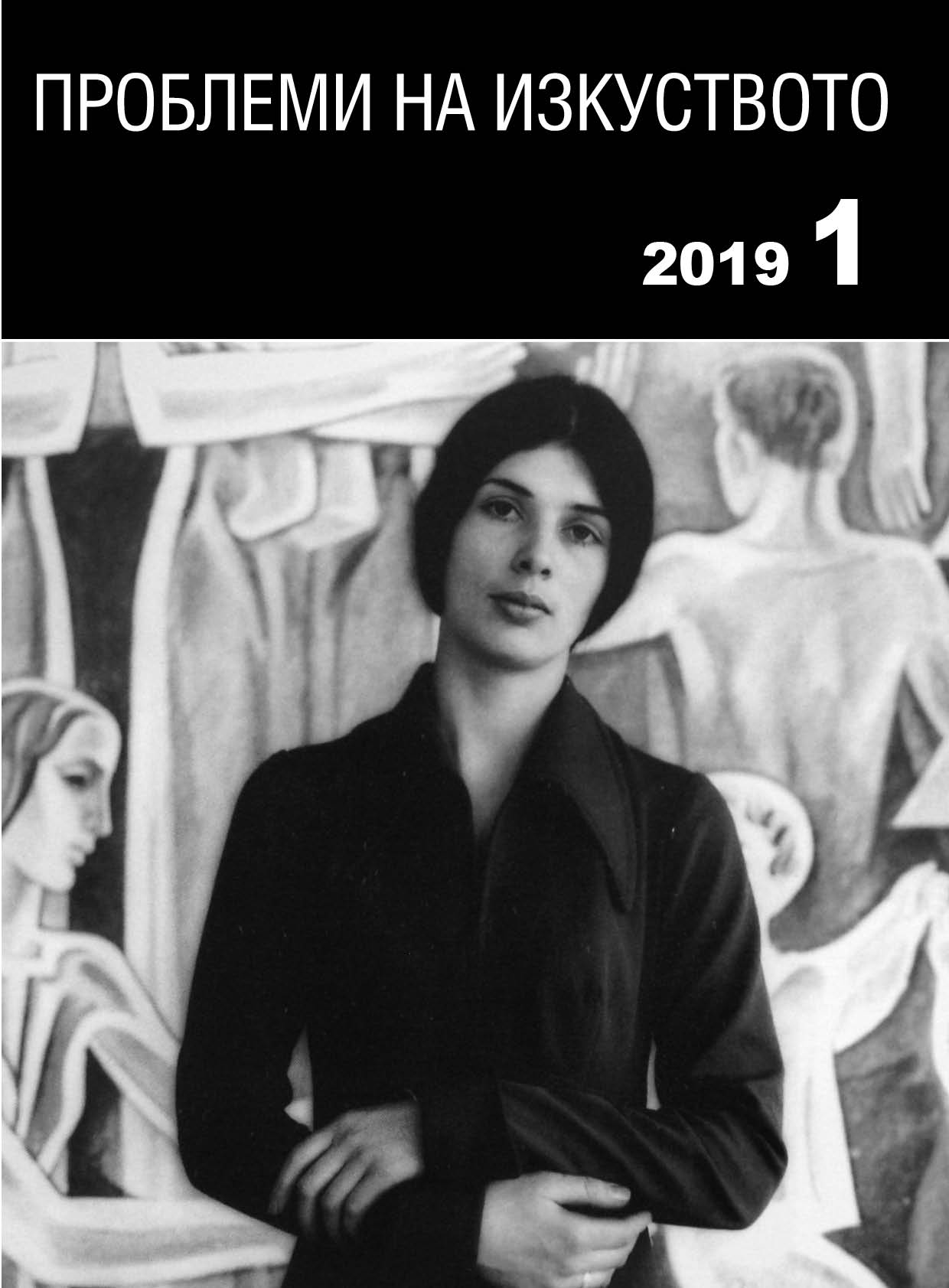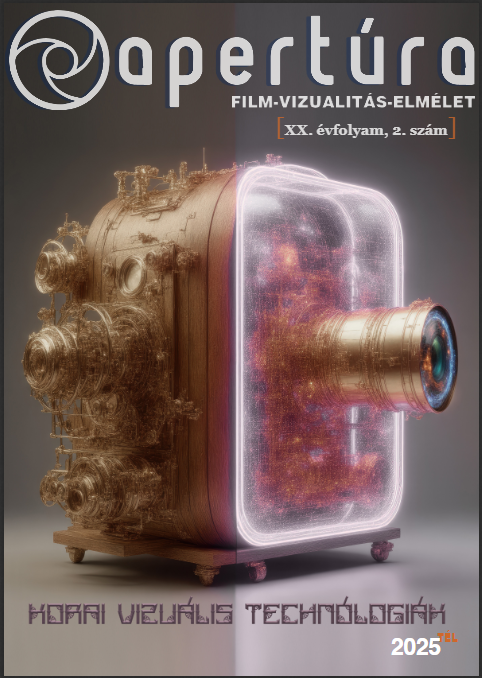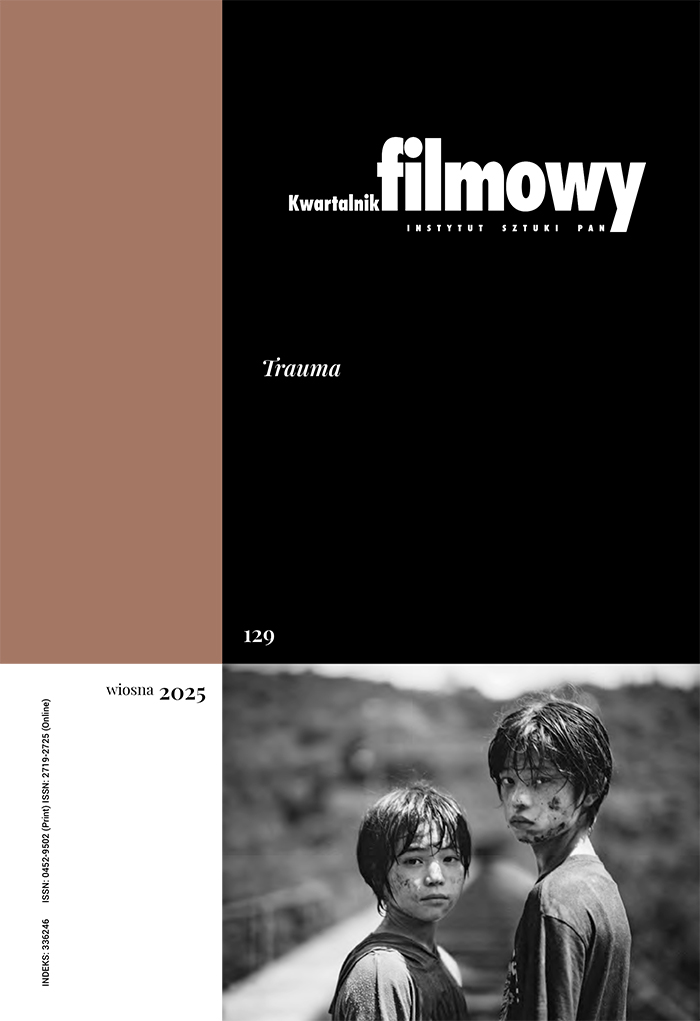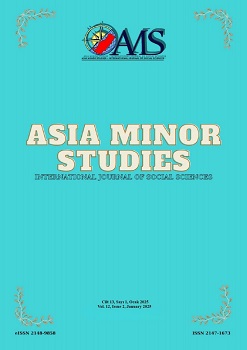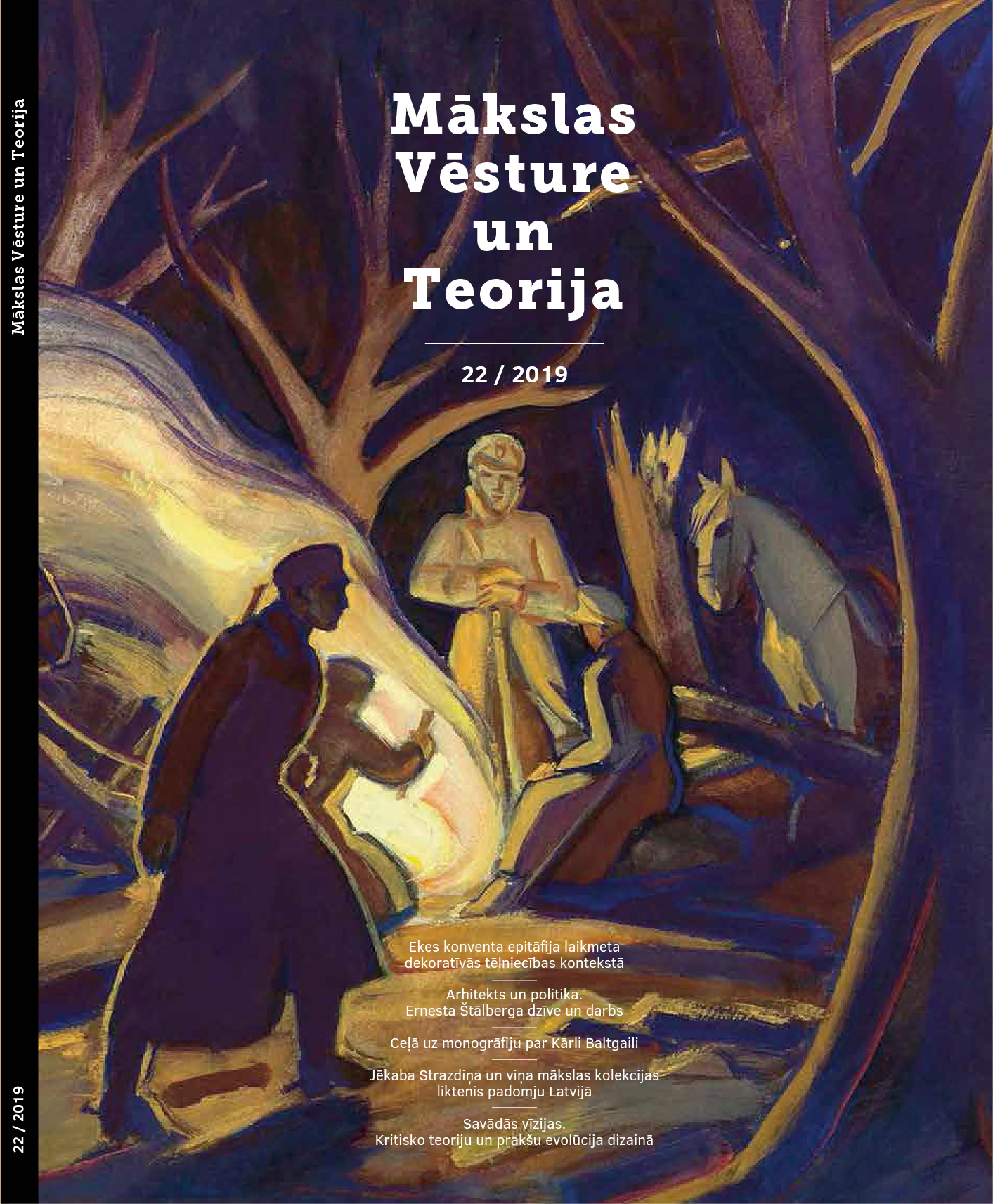
Ekes konventa epitāfija laikmeta dekoratīvās tēlniecības kontekstā
Ecke’s Convent epitaph is among the most renowned monuments of decorative architectural sculpture in Riga’s early modern-period art history. This article aims to draw attention to the chronological problem of the epitaph’s sculptural part and ornamental frame, the iconographic content of the composition and printed samples as well as the formal analysis and stylistic influences. In 1589, Burgomaster, Burgrave and one of Riga’s best educated and influential patricians of the time, Nicolaus von Ecke, founded a home for the widows of the Small Guild poor craftsmen in a 15th century travellers’ shelter, undertaking the renovation of the house. Reconstruction of the main building took place in 1594–1596. In 1618, a stone epitaph was installed in the central part of the convent building; it became the compositional and thematic accent of the façade. The frame of the epitaph is shaped as an ornamental cartouche, using Mannerist expressive means – scrollwork, strapwork and floral motifs. The central part of the relief features a sculptural group illustrating the New Testament subject of Christ and the Woman Taken in Adultery. The artist has represented the human figure in both low and high relief, in places approximating sculpture in the round. Background figures are made in the technique of rilievo schiacciato, achieving a painterly, vanishing effect. The figures have slender proportions and small, classically shaped heads with finely elaborated details. The high artistic level indicates the significance of some active European centre. The latest inspection (2018) has shown that the material used is most likely limestone. Since the 1930s, there had been a deep-seated assumption that different artists authored the epitaph’s frame and relief, the frame being made in Riga while the relief – imported from abroad. However, the inspection proved that the sculptural relief and the decorative frame are made of the same material. This allows us to hypothesise that both parts belonged to a unified compositional structure from the start, subjected to certain principles of proportioning. Initially the surface of Ecke’s Convent epitaph was probably polychrome, painted over many times later. Similarly to other places in Northern Europe, Hans Vredeman de Vries’ examples were decisive in the ornamental plasticity of the Riga epitaph. The composition “Christ and the Woman Taken in Adultery” was derived from specific printed examples but does not copy any particular engraving. The image of Christ resembles an engraving from Maarten de Vos’ drawing NVDVS ERAM ET OPERVSTIS ME (“I was naked and you clothed Me...”) included in the illustrated Bible edition Thesaurus Sacrarum historiarum Veterus et Novi Testamentum (1585) issued by Gerard de Jode in the series “Christ’s Seven Works of Mercy”. The overall composition references other printed versions inspired by De Vos’ interpretation of the subject, such as the engraving “Christ and the Woman Taken in Adultery” in the publication Vita, Passio et Resurrectio Jesu Christi (1598) by Adriaen Collaert as well as Hieronymus Wiericx’s engraving for some of the printed sheets series issued by the Sadelers. Bustling Flemish sculptors’ workshops along with the period’s typical tendency of artists’ migration created favourable conditions for the export of artworks and northward transfer of knowledge. Ecke’s ambitions and financial resources meant he was probably among the principal individual commissioners of art in Riga back then. Boris Vipper once noticed a stylistic connection to the Netherlandish School, naming a hypothetical author – the master of Flemish origin Wilhelm Barth van der Meer Jr., one of Danzig’s leading sculptors. However, this hypothesis lacks substantiation; also, no analogies to the circle of other popular Danzig workshops have been found. No documentary evidence has survived on the works carried out in the convent at that time. The formal aspect of Ecke’s epitaph demonstrates an Italianate style and prompts looking for a classically oriented workshop, unrelated to either van den Blocke dynasty active in Danzig or the adaptations of Floris’ style in Northern Germany. Classicising facial features and body proportions are rather similar to the Antwerp sculptor Willem van den Broeck’s all’antica style. Researcher Fritz Scholten for his part points out that the relief could be related to the leading Walthers’ dynasty of sculptors in Dresden. In line with this theory, the closest analogies to the Riga high relief emerge in Sebastian Walther’s and Christoph Walther’s reliefs and sculptures for the Nosseni altar (1606). At the turn and in the first quarter of the 17th century, the influx of immigrant masters and more active circulation of artistic innovations fostered the development of stone sculpture in Riga. A prolific workshop was headed by the sculptor and stonemason Berent Boddecker, originally from Lübeck, who held the post of the city master builder since 1608. His workshop specialised in stone epitaphs, coinciding with the works of late 16th century Netherlandish masters active in Mecklenburg, for example, Philipp Brandin and his assistants. In the last quarter of the 16th – first decade of the 17th century, Flemish master Robert Coppens’ workshop was also active in Lübeck, revealing closer analogies. In general, Boddecker can be linked to direct followers of the “Mecklenburg Renaissance” imported by Flemish masters. The Riga epitaph was probably made in the period from 1612 to 1618 after Ecke’s return from exile. Some means of working out details are similar to Caspar von Tiesenhausen’s and Maria von Effern’s epitaph in Riga Dom Cathedral (1611) as well as Franz Ringenberg’s epitaph in St. Peter’s Church (1611), possibly related to Boddecker’s workshop. However, the connection has not been proved. Both the material and geometric structure of the epitaph demonstrate that its relief and frame were commissioned at the same time and were most likely made at the same workshop. The epitaph is also not an isolated, imported example, as it shows links to other monuments of Riga’s memorial sculpture of the time. Petrographical and mineralogical analysis of the epitaph remains a task for the near future to establish the geographical origins of its material and thus widen the knowledge about the contacts between Riga’s early 17th century sculptural workshops and other Northern European regions and their major sculptural centres.
More...
